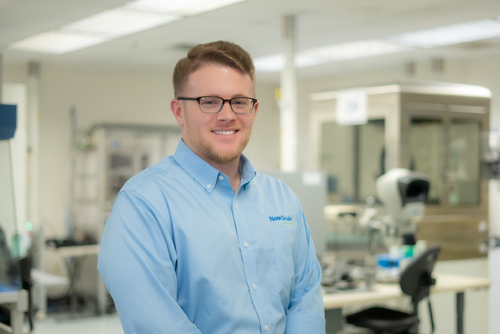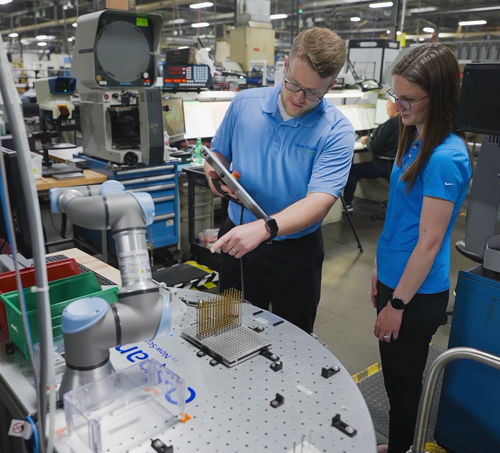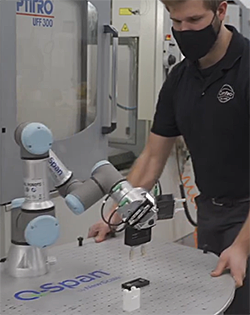I talk to a lot of US manufacturers doing high-mix manufacturing. By far the biggest challenge I hear about, on a daily or weekly basis, is the current labor market.
Every shop I visit has a hiring sign out front.
When giving conference presentations, I ask, “How many of you are currently hiring? How many have open positions in your quality department?” Nearly every single hand goes up, every time.
In fact, many cite attracting and retaining staff as their #1 business priority for the foreseeable future. Why?
- They are losing their current workforce to retirement. People with 30 to 40+ years of experience are retiring faster than new employees are entering the workforce.
- They cannot find enough people to maintain current production levels, much less increase production.
- Quality control departments cannot keep up with current production levels. There is often a bottleneck at QC for inspection, both in-process and final inspection before shipment.
Automation for small businesses
Automation is an obvious solution. But traditional automation solutions have been too costly for small businesses. The 2020 research brief Manufacturing in America: A View from the Field (PDF) by the MIT Task Force on the Work of the Future highlights the impact on their productivity, and hence competitiveness:
In the early 1970s, the productivity (measured in shipments per employee) of large manufacturing establishments…was only about 22 percent higher than in plants with fewer than 500 workers. By 2012, revenues per employee at plants with more than 500 workers were 96 percent higher than those at smaller plants.
Trying to explain slow productivity growth in SMEs, and what appears to be their worsening relative performance, seems a critical step in understanding the future prospects of U.S. manufacturing. When, why, and how manufacturing firms acquire new technology; how they find or train workers with new skills—these issues are central to figuring out why productivity lags in smaller companies.

Cobots address labor problems for small business
Now, collaborative robots (cobots) are making automation affordable for high-mix, low- to mid-volume production. We are seeing many small businesses consider automation for the first time. Others are accelerating their plans for automation.
While we are seeing mostly early adopters deploy cobots today, they are clearly making their way into the early majority of the market.
Cobots address labor problems for quality teams
For quality teams, automation addresses these challenges:
As skilled inspection staff are retiring, critical metrology know-how must be retained. There are few newly-hired inspectors to pass this knowledge on to. Implementing a collaborative robot automation system can capture this knowledge.
Labor costs, even at minimum wage, are too high to hire full-time manual inspectors, even if companies could find them. Yet the requirements for quality and even 100% inspection are not going away. Collaborative robot automation reduces labor costs for this boring and tedious – yet exacting and critical – work.
Management demands a growing amount of accurate, real-time data to feed internal initiatives for continuous process improvement. Automation, with metrology systems networked into the company’s information systems, is the best way to provide that data.
Rather than replacing workers, cobots actually help attract and retain workers. As one customer pointed out:
“We need creative ways to attract and retain employees in the manufacturing environment. One way to do that is through cutting-edge technology that’s fun to use, and gives them freedom in the workplace to move to areas of need and not be stuck doing repetitive measurement tasks.” See the video
As we have seen in both machine shops and workforce development centers, people are excited by the chance to use the latest technology for advanced manufacturing. Collaborative robots put this chance within reach for employees at small business.

by Stefan Friedrich, Marketing Manager, New Scale Robotics


